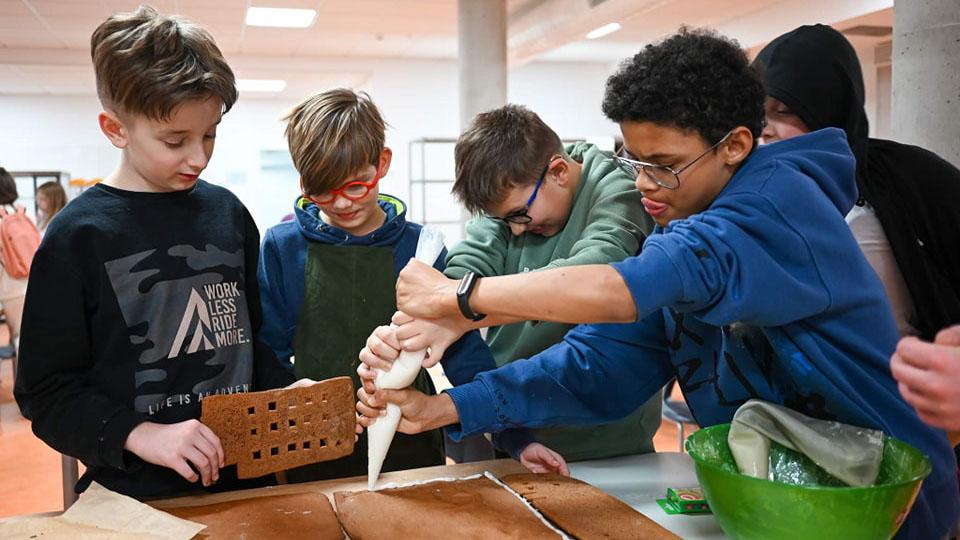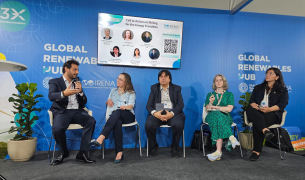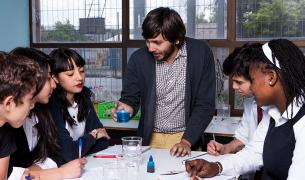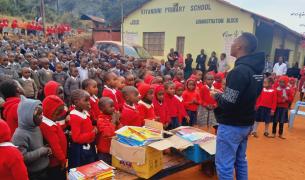STEAM projects are a pathway to modern education

According to Jesper Juul, a Danish therapist and educator, 80% of the most creative people who played an important role in social, scientific, or political life experienced some sort of problem at school. His book “Schools in Crisis” accurately diagnoses student and teacher burnout and calls for a radical change in attitudes toward students. Juul suggests that the change should revolve around trust instead of coercion and real relationships instead of impersonal rules, as there is no space for acquiring new competencies during lessons filled with coercion and obedience. New competencies are developed in a friendly environment where children can work together with the guidance of an empathetic educator. But how do we create schools that prepare students to be functional citizens within a modern society? We need caring, empathetic teachers and welcoming, inclusive school environments that nourish student growth and positive community relations while also promoting creativity, communication, collaboration, and critical thinking (4Cs). For me, the pathway to such schools leads through project methods such as STEAM.
STEAM-focused education integrates science, technology, engineering, arts, and math and is driven by interdisciplinarity. It exposes students to holistic thinking. This cross-disciplinary education approach focuses on project-based methods while balancing hard skills with soft and social skills. This combination allows students to fulfill the core need for knowledge while promoting soft competencies development. It also allows all students to feel valued and respected for who they are, which makes education more inclusive.
Background
I am a Polish math teacher at a primary school with around 900 students in Marki, near Warsaw. I have worked at this school for two years since becoming an EduLeader with Teach for Poland.
In my school, there are many students with special educational needs. Several of them are mathematically gifted. But there are also many students who have great difficulty in learning mathematics. One of my biggest challenges was finding a compromise in teaching math to students of all abilities while developing 4Cs competencies. I realized that in order to make math education more inclusive, I needed to focus on project-based learning and decided to try this out with a project designed around the interdisciplinary approach of STEAM education.
STEAM gingerbread school project overview
When planning a STEAM project, putting myself in my students' shoes is essential. The fact that I teach math four times a week with my students helped me to get to know them better. For STEAM projects, I use simple, real-life problems. I believe that one can learn great things from simple projects and bring joy to those involved.
The general project idea I settled on was to construct, bake, and decorate a to-scale gingerbread model of our school building. Our starting point was to get access to an architectural school plan, walk around the school, take photos, and measure the height and width of the building in order to get the correct scale. This part allowed us to perform numerous mathematical calculations, work as a team, and use analytical skills, research skills, and 3D imagination, including using a school 3D printer.
This gingerbread project was supported by Emily Cunningham, an experienced math teacher from the United States who assists Teach for Poland. During our regular meetings, we found that we have so many similarities in teaching math and working with students. Together we brainstormed the plan, and during one conversation, my US colleague suggested that I invite parents to help on the day we built the gingerbread model, which was a huge part of the project’s success. After the project was over, she also encouraged my seeking reflection and feedback from both students and parents to bring learning full circle and set the vision for future collaborative school projects.
Project goal setting
By setting goals, the team had a stronger sense of purpose and direction. We decided on individual and team goals. Personal goals were important because, thanks to those, different tasks were allocated to each team member, which was an example of inclusiveness in education. The goals revolved around trying, practicing, instructing, and ensuring that no one felt pressured. Our motto for this project was "Just trying is great!"—which aimed to reduce the pressure on achieving final results.
Group goals, on the other hand, were more specific. An example of those would be baking gingerbread school walls or calculating the project's cost. That was followed by the “To Do, Busy, and Done” table and dividing tasks among the team members.
During a moment of reflection, we also talked about failures and the fact that things don't always go as planned and that the project can fail for various reasons. However, project failure provides a great learning opportunity.
Gingerbread school prototype
We made a prototype to validate our idea of a 3D school, prove our calculations and avoid the risk of collapse. The 3D model later helped us cut out the gingerbread's proper wall shapes. A good prototype helps to predict risks and reduce mistakes. During the prototyping phase, we were also able to involve additional people (e.g. other teachers) and get their feedback on various aspects of our project. This phase helped us learn that there is nothing wrong with asking for advice or assistance if needed.
Project day
On the final project day, parents and students focused on their jobs. The first team prepared the gingerbread dough and cut out the appropriate shapes. With the prototype and proper preparation, all the walls were cut out and baked in the right shape. Difficulties arose when gluing together the gingerbread walls with icing as it took a long time to set. We needed everyone's help to hold the walls in place as we waited patiently for the icing to dry. Asking for and accepting help from other team members was also an important part of the project. In the end, the school's gingerbread walls were made, and we all finished the baking with a sense of success.
Looking back
Summary and reflection are vital parts of the STEAM project, and it was important for us to hear from the perspectives of the three groups involved: students, teachers, and parents. Students were asked to provide feedback on the project and advice that we could use for future projects, and parents were asked to fill out a short survey. The feedback of both groups was very similar and focused on teamwork, task sharing, and parental involvement.
Here is a reflection from one of the parents:
“I believe workshops which focus on soft skills are much needed. Children are increasingly alienated, and they find it difficult to form relationships. This type of activity has a chance to help them to find their way among their peers and feel that their work is valued. Any activity that promotes communication and teamwork skills is extremely important. An additional advantage is the opportunity for parents to be involved as in their daily busy lives, they do not have the energy to spend time with their children in a creative way.”
This quote is an example of student feedback on the gingerbread project experience:
“In my opinion, this project was delicious and smelled nice. When we did it, we divided the tasks, and it was very nice. I liked that parents helped with this project.”
Conclusion
During my time teaching with Teach for Poland, I have observed the need for changes in education. Many teachers confirm that the older methods are unsuitable for current students. Project methods like STEAM offer solutions where every student can find a task that they feel good about, and inclusive STEAM education makes a school more accessible to all learners.
Using a project-based approach not only helps to develop various different skills for our students but also educates teachers. While applying project-based methods, we highlight the importance of a good relationship with all education stakeholders. Students, families, and teachers make up the education system, and we all must work together to help students become better people. Education through STEAM projects—combined with soft skills—is an excellent tool to bring all these elements together with students in the lead and with parent support and cooperation. Being a part of the Teach For All network—learning from each other without boundaries—gives us a tremendous advantage. It's also an excellent opportunity to receive advice from other people who practice STEAM in their schools.



